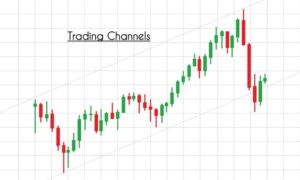10 Forex Trading Discipline Rules
1. The market rewards discipline.
Trading with discipline will increase your profits and decrease your losses. The one thing always true about the markets is that discipline leads to higher earnings.
2. Trade consistently with discipline, and the market will reward you. However, IF YOU ARE NOT 100% OF THE TIME DISCIPLINED, DO NOT CLAIM TO BE DISCIPLINED.
Being disciplined is crucial, but it cannot be done occasionally, like saying you’ve given up a harmful habit like smoking. You have not quit smoking if you say you have stopped but still sneak the occasional cigarette. You cannot call yourself a disciplined trader if you only use discipline in nine of 10 trades. It is the one impulsive trade that will detract from your day’s performance. In every trade, discipline must be practised.
The market will usually reward you when I say that, as opposed to if you were stubborn and held on to a poor transaction for an extended period. If I lost $200 on a transaction but would have lost $1,000 if I hadn’t exited quickly, I can argue that by doing so, I spared myself $800 in subsequent losses.
3. When you’re trading poorly, ALWAYS LOWER YOUR TRADE SIZE.
All savvy traders adhere to this principle. Why keep losing on five lots (contracts) per trade when you may reduce your trade size to one lot on your subsequent trade and save a ton of money? If I have two consecutive losing trades, I always reduce my transaction size to one lot. I’ll increase the deal amount to the original lot size if my next two trades are successful.
It’s comparable to a batter in baseball who has struck out in both of his most recent at-bats. The following time, he will abbreviate his swing, choke up on the bat, and try to make contact. The same rules apply to trading: lower your trade size, try to make a tick or two, or even scratch the deal, and then increase your transaction size after two consecutive winning trades.
4. DO NOT make a victor become a loser.
Each of us has broken this rule. Our objective should be to work harder to uphold it in the future. Here, the greed component is what we’re referring to. You have been rewarded by the market, which is moving in the direction of your position. However, a minor victory does not satisfy you. As a result, you hold onto the transaction in the hopes of making a bigger profit, only to have the market change and move against you. Unavoidably, you pause now, and the deal progressively degenerates into a huge loss.
There’s no reason to be avaricious. There is just one trade. You place numerous more trades throughout the session and the next trading sessions. The market is constantly full of opportunity. Remember that no single deal should determine how well you perform for the day. Don’t be a glutton.

5. Your greatest loser cannot surpass your greatest winner.
Throughout the session, keep track of all your deals in a trade log. Don’t allow a losing transaction to total more than five E-mini S&P points, for instance, if you know your highest victory for the day has been five points. When you net out the biggest winner and worst loser, you have a net loss on the two trades if you let a loss surpass your biggest gain. Requires development.
6. CREATE A METHODOLOGY AND USE IT CONSISTENTLY. AVOID MODIFYING METHODOLOGIES DAILY.
I ask my students to list the exact market situations (prerequisites) that need to occur for them to make a trade. I only care about the approach if they have a set of guidelines, market settings, or price action that they must meet to execute a trade. It would help if you had a strategy.
Only devise a new methodology that night if your tried-and-true one functions during a particular trading session. If your trading strategy works for more than 50% of the trading sessions, keep with it.
7. Be genuine. AVOID ATTEMPTING TO BE SOMEONE ELSE.
In all my years of trading, I only traded up to 50 lots on a single trade. Yes, I would have loved to trade as frequently as my pit colleagues, who typically traded 100 or 200 lots per trade. To trade on such a large scale, I required a certain set of emotional or psychological skills. That’s OK. My comfort level per deal was 10 to 20 lots. More than 20 lots would cause me to “butcher” the trade. I couldn’t manage that size emotionally. THE DEAL WOULD UNAVOIDABLY END IN A LOSS because I could not trade with the same level of talent I possessed with a 10 lot.
Recognize your comfort level regarding trade size and learn to accept it. You are what you are.
8. You always want the option to return and play the following day.
Never put yourself in a risky situation where you lose more money than you can handle. The worst feeling in the world is wanting to trade but being unable to do so because your account’s equity is too low, and your brokerage company will only permit you to proceed if you submit more money.
I expect my pupils to set daily performance downside boundaries. Your daily loss cap, for instance, is always $500. You must shut down your PC and end your session once you’ve lost $500. You can always return the next day.
9. GET PERMISSION TO TRADE 9 BIGGER.
Too many novice traders believe they have the authority to trade five or ten e-Mini S&P contracts because they have $25,000 equity in their trading account. There is no way that this is true. What gives you the impression that you have the authority to trade ten lots if you can’t even deal with one lot successfully?
I insist that my pupils demonstrate a profit over ten straight trading days with just one lot. They have won the privilege to trade a two lot for the subsequent ten trading sessions once they have completed a profitable ten-day period.
If you perform poorly with two lots, remember to reduce your trade size to one.
10. LEAVE YOUR LOSERS.
Because you have a losing deal, you are not a “loser.” If you do not exit the losing transaction after realizing it is bad, however, you will lose. It’s astonishing how well your intuition predicts the market. If you have a gut feeling that the deal is bad, it is probably bad. It’s time to go.
During the session, every trader has experienced losses. For me, a typical trading day consists of 33% loser transactions, 33% scratchers, and 33% winners. I leave my losers right away. They didn’t set me back a lot. Therefore, I still make money even if I have lost or scratched more than two-thirds of my daily deals.
